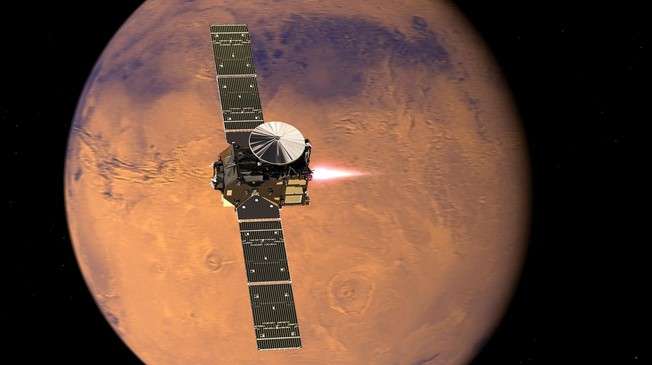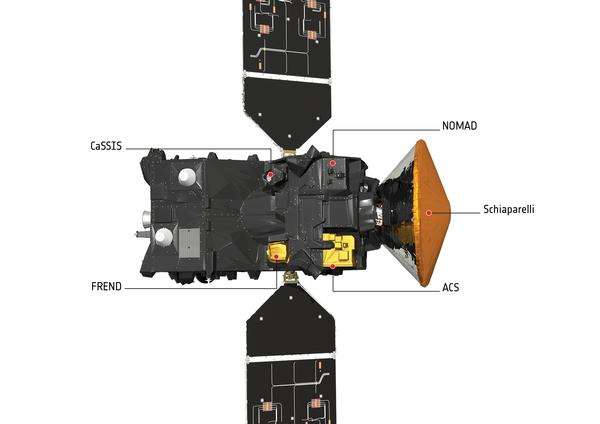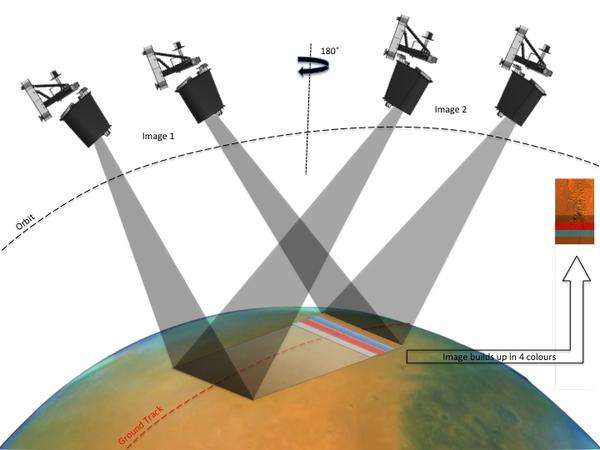A Swiss camera is going to Mars

The Trace Gas Orbiter, which will search for traces of biological life on the red planet, was launched into space this morning. The probe's array of instruments includes a high-tech camera built at the University of Bern with the help of EPFL researchers.
Successful takeoff! The Trace Gas Orbiter (TGO) was launched into space this morning from the Baikonur Cosmodrome in Kazakhstan and is on its way to Mars. Scheduled to reach its destination in October, it's carrying a camera developed at the University of Bern. Researchers from EPFL's Space Engineering Center (eSpace) will participate in the data analysis from this instrument. They will discuss the project and present their particular contribution to it at a public talk that will be held at EPFL on Wednesday, 16 March.
This launch is the first mission in the ExoMars program, a joint initiative of the European Space Agency (ESA) and Roscosmos, the Russian space agency. Its main purpose is to search for signs of present or past life on Mars. The second mission, which will land an exploration rover, is planned for 2018.
When the TGO reaches Mars, it will go into orbit around the planet. That's when it gets down to work: it will seek trace concentrations of gases – less than 1% – in the Martian atmosphere. It will then attempt to identify their geographical source. This is of interest because, as previous analyses have shown, the accumulation of certain chemical substances, like methane, can vary by location and season. The TGO will help expand our knowledge of the planet's topography, which turns out to be more dynamic than once thought, in order to determine whether these fluctuations are biological or only geological in origin.
Stereo images

The camera that the Swiss team developed – a high resolution imaging system called CASSIS (Colour and Stereo Surface Imaging System) – will play a key role in this task. It will work together with the other instruments on the probe, including the NOMAD spectrometer and the FREND neutron detector, in the effort to identify geological sites.
Sites whose features – crevasses or traces of erosion, runoff or volcanism – indicate potential sources of gas will then be analyzed in greater detail by CASSIS. The camera will take color photos using stereoscopic imaging, a process of taking photos from two different angles, and at a high resolution: better than 5 m.

The TGO will be in a non-sun-synchronous orbit – it won't fly over the same spot at the same time – which means that the probe will allow researchers to observe the surface of the planet at different times of day. They will be able to see various processes at work, like condensation and ice sublimation at the poles and the formation of dust devils. The data will also be used to identify landing sites for future probes.
3D representations
Researchers at EPFL's eSpace worked mainly on the calculations for calibrating the camera as well as on algorithms for processing information provided by the stereoscopic images. "The CASSIS camera is designed to enable easy generation of digital elevation models – 3D representations of the surface," said Anton Ivanov, the lead researcher on the project at eSpace. Together with PhD student Stepan Tulyakov, he also developed a program to precisely identify the position of photographed sites, which will supplement data obtained during previous missions.
Provided by Ecole Polytechnique Federale de Lausanne




















